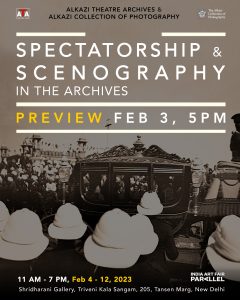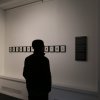 “…all the participants in photographic acts – camera, photographer, photographed subject, and spectator, approach the photograph as an intentional effect of the encounter between all of these…”
“…all the participants in photographic acts – camera, photographer, photographed subject, and spectator, approach the photograph as an intentional effect of the encounter between all of these…”
As intimated by visual culture theorist Ariella Aïsha Azoulay in her book, The Civil Contract of Photography (2012), composing or taking a photograph itself can be inferred as the staging of reality. As dynamic source material, deflecting and reflecting both evidentiary and lyrical dimensions of the subject in view, the image, whether of oasis, landscape, architecture, or of communities, portraits, and ethnographic study, all contain elements of the performative. In ‘seeing’ the photograph, a suspended moment in time is stretched into the present, re-interrogating the act/event as well as the positionality/specificity of the looker. The spectator, the subject, and the photographer are then simultaneously within its gaze (and outside of it), negotiating fields of distance and proximity.
Spectatorship and Scenography in the Archives consists of an array of photographs from the nineteenth to the twenty-first century. The works in this display include landscape photographer, Dr. John Murray’s images of the Taj Mahal shot from the banks of the Yamuna River (1858-1862); amateur Parsi practitioner, Motivala in Delhi during the 1911 Durbar – to post-independence images from Habib Tanvir’s Agra Bazaar (1950s-1990s), stills from Jana Natya Manch’s Safdar Hashmi Shahadat Diwas (1989-present) as well as The Alkazi Theatre Photography grantee (2022), Kush Kukreja’s, Yamuna Local Stories. Collectively, they question whether the act of staging itself enables a captured instant to transcend its historicity? Unmoored from context, do such instances hover between the real and the constructed, and do they enact a new performance of claims and counter-claims, a new writing of history?
In state narratives and official archives of the nineteenth century, the South Asian landscape is still ‘looked at’ through the framework of the colonial gaze. However, they could also be considered ‘scenographic’ – a landscape that constantly changes meaning in the nexus of touristic imaginings, spectacles of power, and tropes of ‘Othering’. Can contemporary landscapes then also be considered differently? Can they be construed as the outcome of the ‘human’ as a ‘geological agent that has had an irreversible impact on the earth’?
In this exhibition, the relationship of the human/figural to landscapes and events is considered as tethered to the dyadic, interlinked fields of scenography and spectatorship. Unlike the portrait image which treats the photographer as the centre of focus, the content here, which is drawn variously spanning 150 years – from survey images and documented events to conceptually framed photographs – often shows the subject moving away, drawn to elements in the landscape, to the periphery and horizon. Framed as referents, as multiple points of view, they are indicators to moments that lie elsewhere, outside an intended line of sight.















